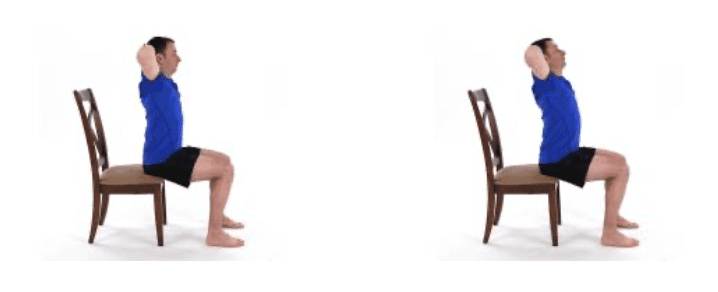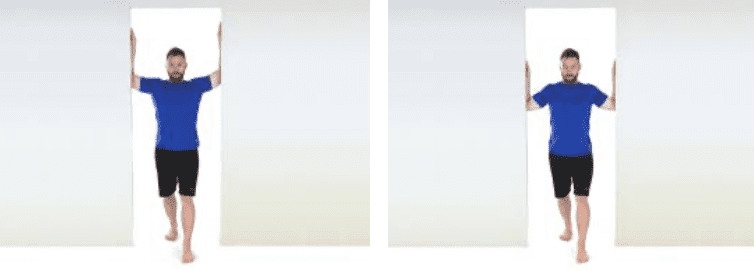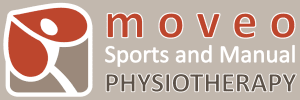
Are you working from home and developing elbow pain? Are you uncomfortable in your forearm while using your computer or mouse? Maybe you have pain along the elbow worsening as your work day progresses? In the past few months, we have noticed an increase in consultation in physiotherapy for elbow pain.
This condition is often referred to as tennis elbow. Your physiotherapist will tend to say lateral epicondylitis. It’s a fancy term to describe tendinitis of the wrist extensors. In other words, the muscles that help raise your wrist and fingers up, such as when using a computer mouse or typing on the computer. Hence why this is referred to as tennis elbow, as this pain will arise from repetitive extension of the wrist, like the back hand in tennis.
What is Tennis Elbow?
Let’s start by explaining a little specifically what is tennis elbow. We all agree that it is an inflammation of the tendon which inserts on the lateral (outside) part of the elbow. The tendon is attached to your muscles on one end and to the bone on the other end. Logically, the muscles of your forearm will be weak and as you repetitively use them, such as when using a mouse, and this will eventually strain through the tendon. This is when it becomes painful and more noticeable. At Moveo Sports and Manual Physiotherapy, we understand that there is inflammation in the area, however, we like to dig a little deeper to find out why…
Did You Know?
A pain felt in the upper extremity, such as elbow pain when using the mouse, is of vertebral origin? By improving your posture and the position of your spine…this pain can improve!
Why is this happening even if you do not play tennis?
- Poor sitting posture. If your space is not ergonomic, you will often have a forward head posture and consequently, your shoulder blade will not be in a mechanical advantage for your forearm to sustain a certain amount of time using the mouse and keyboard. We often also work far from our workspace and create this poor mechanical disadvantage for our muscles. Consequently, this will create weakness in certain muscles and more prone to develop tendinitis along the bony attachment. We usually see through our assessment some trigger points in the shoulder blade and behind the shoulder.
- Each muscle of our body is innervated by a specific nerve. This nerve comes out along a vertebrae. If your posture is not optimal and develops areas of stiffness, this can make your muscles along this nerve more vulnerable to fatigue, weakness and injury.
- Consequently, we often notice a stiff area of your neck and mid back. This often happens on the same side of your painful elbow.
We are trying to keep this simple for you. However, you may notice that a simple elbow pain is not that simple. We strongly suggest that you consult your health care professional to determine the root of the problem and not just treat the pain along your elbow. Your treatment plan should be catered for your specific needs and without a doubt, your plan should include a hands-on approach with some homework so you can maintain your gains while at home.
What Physiotherapy May Look Like for a Patient With Elbow Pain:
- Education to the patient. We love to use our spine model to show you which part of your neck and mid back is stiff. Also, where trigger points can refer pain further down the arm. You understanding your condition will empower you to participate actively in your rehabilitation. Knowledge is power.
- A Home Exercise Program catered specifically for you. This can include a mid back and neck mobility program with a shoulder blade strengthening routine. We always progress your home exercise program accordingly depending on the evolution of your condition. We can also send you a program through your email allowing you to follow videos along the way.
- Graston technique, Dry Needling or IMS to address the nerve component and consequently, the triggers along the muscles.
- Manual Therapy to help with the hypomobile segments of your spine.
- Modalities as needed to help for pain management.
- K Tape to help with postural awareness and help facilitate certain muscles while you work from home.
Here are a few key things you can do in the meantime to help with your elbow pain. Please note that these exercises and key points are not catered to you and do not take in consideration your personal health history or you as an individual. We suggest consulting your health care practitioner for a more specific program for you and to ensure that you do in fact have a lateral epicondylitis.
Proper Sitting Ergonomics
It’s important to keep your neck in neutral and arms near your body. We understand that this is not always easy considering you are likely now working from home and finding it hard to adjust the space specifically for you. Be creative…use some books to elevate your computer. Maybe you can also sit on a stability ball to help stay upright? Frequent position changes may also help you maintain a proper posture throughout the day. We often suggest to set up an alarm every hour to remind you to check your seated posture while working.

Mid Back Mobility
We often neglect this part of our back. It is a more rigid area and naturally, we keep this part of our spine flexed most of the day, especially seated. If you have ongoing trigger points along the shoulder blade area, you will likely respond well to a mobility program of the thoracic spine. We spend a lot of time talking about areas where you shouldn’t compensate, however, to keep it simple, when doing this stretch, you should feel some pressure through the shoulder blade area. Try to decrease compensations by avoiding arching backwards through your low back or neck area. We suggest holding this position 10 seconds, 3 times.

Stretching Your Shoulders
Stretching your pectoralis muscles may help you counter this prolong seated posture. We suggest trying a few different angles, as you have different fibers of your pectoralis muscle. Once again, try to avoid arching your low back and also rotating your trunk. Slowly lean forward by lunging with your knee. You should feel a nice stretch on the front portion of the shoulder. Hold this position 15 seconds and repeat it 3 times.

Shoulder Blade Resetting
This resetting is the first step to your shoulder blade strengthening program. Try squeezing the shoulder blades in a combined movement of in and down, without using the upper trapezius (those big muscles on the top of your shoulders). This should also be done without arching your lower back. It is a small movement, such as trying to squeeze a pencil through your shoulder blades. Try this 5 seconds x 5, 5x/day. Especially when seated at your computer.

Physiotherapy for Elbow Pain… We Can Help!
We hope that this blog has been helpful to understand a little more about this forearm and elbow pain that may arise when working from home. If you are looking for quality, hands on, patient centered care, please do not hesitate to contact us! Our physiotherapists in Orléans are here to help with your elbow pain and much more!

